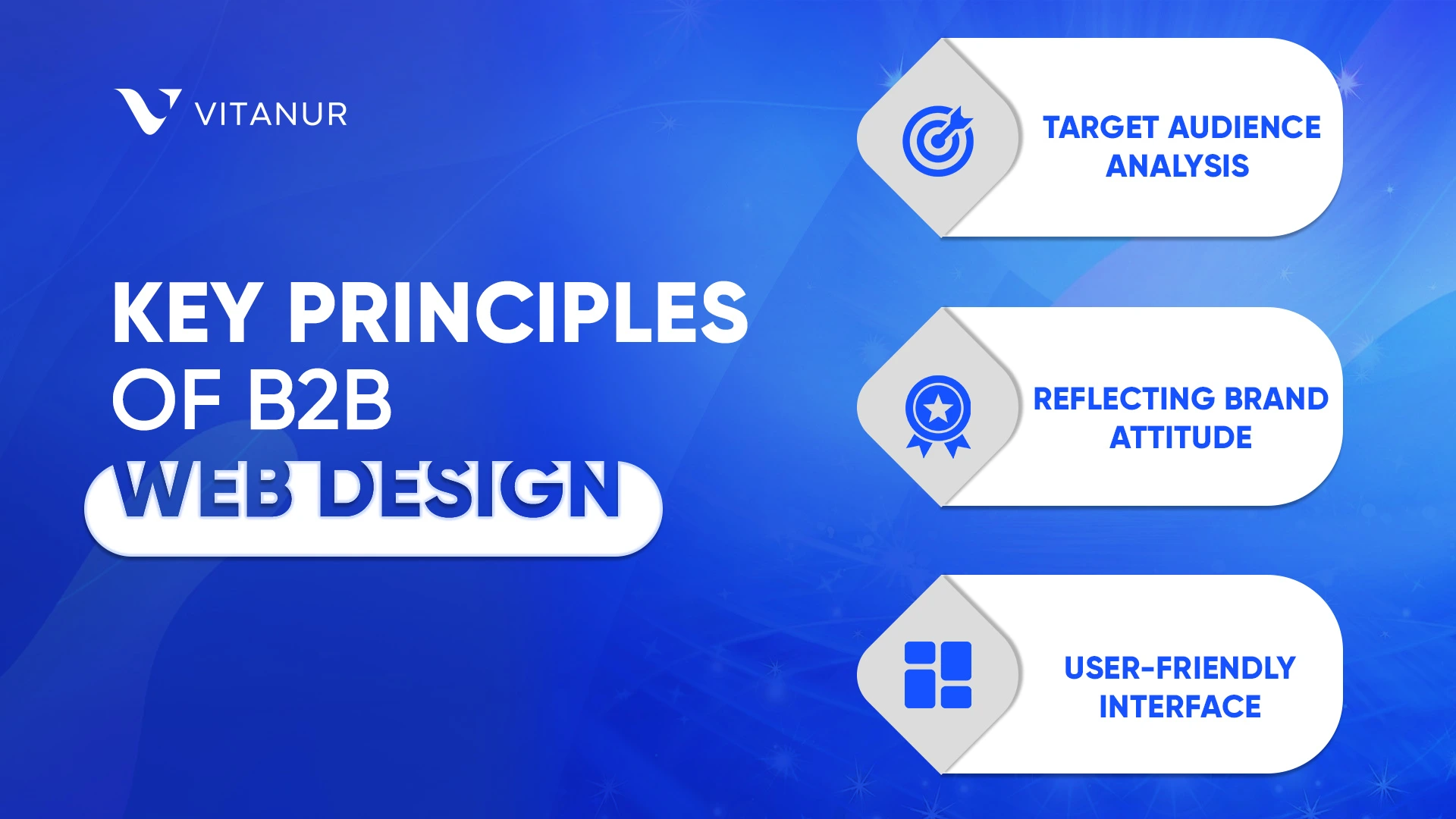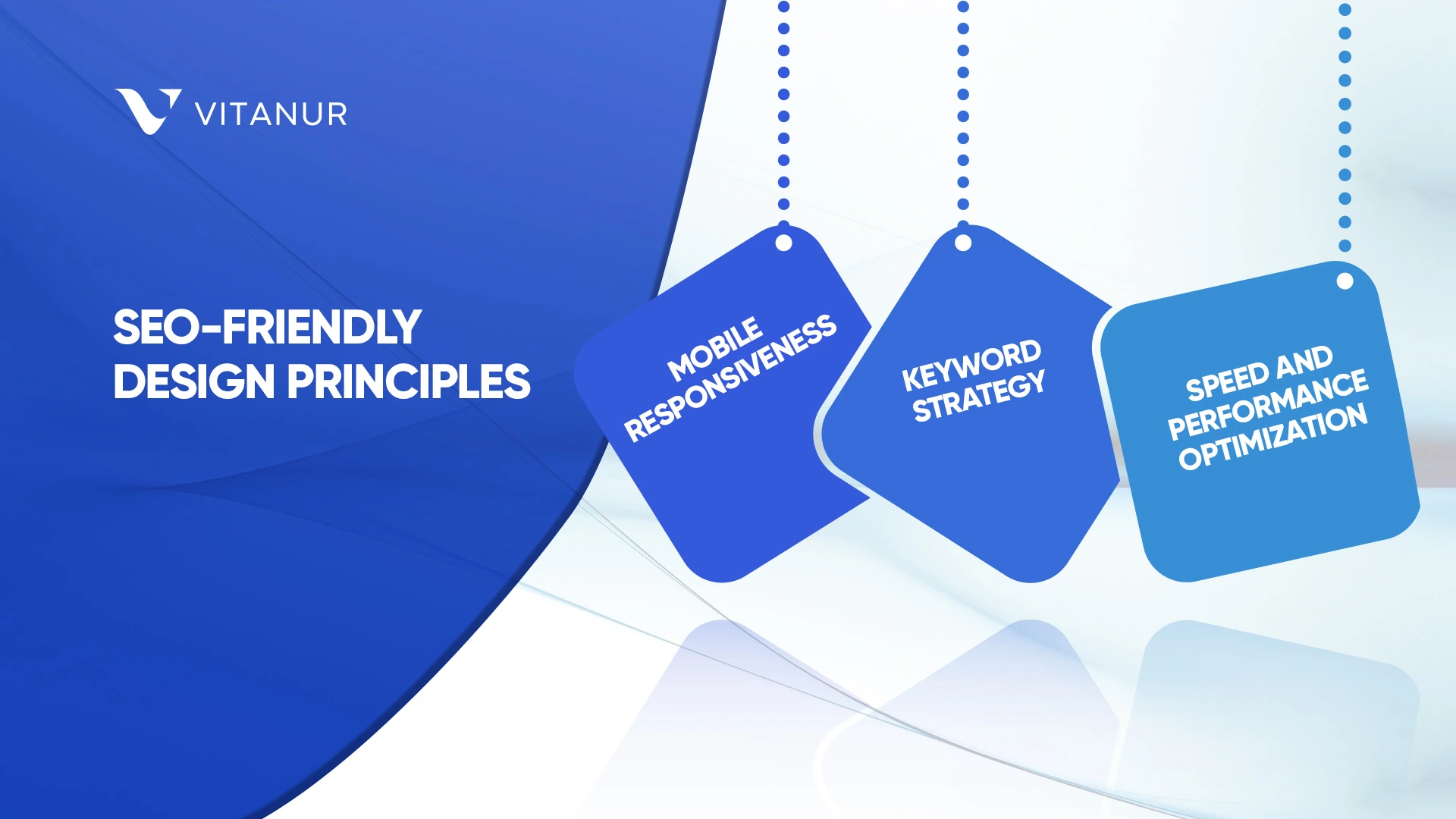B2B Web Design Strategy: Best Practices for Powerful B2B Web Design
The digital landscape is vast, but at its core lies B2B web design, a delicate balance between art and science, crafting platforms that give life to brands. Massachusetts, with its scenic vistas and innovative spirit, serves as the backdrop for our B2B web design agency. Here, we spin narratives that encapsulate the essence of businesses, translating them into a cohesive digital tapestry. When pondering about web design companies in Massachusetts, visualize a meld of creativity and strategic prowess, where best practices evolve into benchmarks. Our B2B web design guide acts as a beacon, steering brands towards a harmonious intersection of aesthetics and functionality.

Massachusetts resonates with ambition, a place where every B2B web design firm strives for excellence, setting their sights on uncharted horizons. What's the key? It's blending the timeless appeal of traditional B2B web design styles with the freshness of contemporary trends. It's essential to sift through the myriad of digital novelties, identifying those that enhance a brand's authentic voice. Websites in this digital age are more than portals; they represent a brand's heart and soul, connecting with visitors on profound levels. Through the seamless integration of design, strategy, and user experience, we sculpt online spaces that captivate and inspire. Join us on this journey as we delve deep into B2B web design nuances, fostering a symbiotic relationship between innovative design techniques and the elevation of business prowess. Dive into the vibrant world of B2B web design in Massachusetts, where every pixel is a testament to a brand's narrative.
Key Principles of B2B Web Design:
Now, as we shift our focus from the overarching principles that define exceptional B2B web design, we'll venture into the cornerstone of building an impactful website: Leveraging data and insights to craft tailored user experiences in a constantly evolving business world.

Target Audience Analysis:
In the world of B2B web design, understanding your target audience is the first and foremost principle. A comprehensive understanding of your audience is the linchpin of a successful website. This understanding goes beyond demographics; it delves into the very core of your potential clients' needs, preferences, and pain points. Market intelligence becomes crucial, illuminating the intricate dynamics of your audience's behavior, preferences, and aspirations.

-
Holistic Understanding: Beyond just age and location, knowing your audience means understanding their motivations, challenges, and desires. This comprehensive approach is at the heart of a B2B website's success.
-
Beyond Demographics: Dive deeper than basic demographics. Explore the nuances of potential clients' preferences, pain points, and expectations. The aim is to tailor a website experience that feels personalized and relevant.
-
Value of Niche Market Insights: Market insights act as the compass. They illuminate the path, revealing specific audience behaviors, preferences, and goals.
-
Foundation of User-Centered Design: Data-driven insights enable the crafting of designs that echo with your audience's expectations. It's about making them feel seen, understood, and catered to.
-
Maximizing B2B Website Potential: The true power of a B2B website emerges when it becomes a platform that doesn't just inform but also connects and resonates.
Armed with a deep-rooted understanding of your audience and the latest in design best practices, your B2B website can not only capture attention but also foster meaningful business relationships.
Reflecting Brand Attitude:
When you step into the domain of B2B web design, the canvas you're presented with is vast and intricate. Much like renowned B2B web design agencies in Massachusetts and beyond, the goal isn't just to paint a pretty picture but to etch a narrative that speaks volumes about a brand's ethos. This domain is not just about meeting aesthetic benchmarks; it's a strategic interplay of visuals, content, and user experience tailored to fit a brand's unique persona.
The most effective B2B web designs seamlessly integrate the brand's identity into every design element. From color palettes to font choices, these decisions aren't merely cosmetic. They're intentional choices made to echo a brand's core values, ensuring that every visitor is treated to a cohesive and immersive brand experience. As B2B web design trends evolve, it's paramount for businesses, especially in competitive hubs like Massachusetts, to keep their websites contemporary. Yet, amidst this evolution, the essence of storytelling remains constant, allowing brands to establish authentic connections and assert their space in an ever-competitive digital landscape.
User-Friendly Interface:
Stepping into the realm of B2B web design, one quickly realizes that it's not just about aesthetics but strategic integration. Renowned B2B web design agencies, especially those in hubs like Massachusetts, aim to weave a brand's story through every design choice. This narrative encompasses color palettes, font selections, and intuitive layouts, all echoing a brand's core values. As B2B web design trends shift, it's crucial for businesses to maintain websites that are both modern and representative of their identity.
Central to this design strategy is the importance of a user-friendly interface. An effective B2B web design firm understands that a site's interface is its first impression. Thus, ensuring clarity in navigation, a responsive design, and easily accessible information is paramount. It's a blend of:
-
Prioritizing the user's journey
-
Adapting to evolving design trends
-
Balancing aesthetics with functionality
With this in mind, a B2B website transforms from a mere online presence to an engaging digital experience, fostering sustained user engagement and catalyzing business growth.
SEO-Friendly Design Principles:

Now, having explored the key elements of optimizing your website for better search engine visibility and user experience, let's transition to further strategic components that enhance the efficacy of B2B web design:
Keyword Strategy:
A successful B2B web design agency understands the intricate dance between aesthetics and strategy. Massachusetts, with its rich legacy of innovation, boasts a variety of web design companies. Yet, it's those that seamlessly integrate the best B2B web design styles with evolving B2B web design trends that truly make their mark. By adhering to B2B web design best practices and continually updating their B2B web design guide, these agencies demonstrate not just expertise, but a commitment to excellence.
Keywords, in this digital realm, are not just tools for SEO but the bedrock of meaningful audience engagement. Consider the term 'B2B web design firm'. When employed effectively, it does more than boost search engine rankings; it signifies a promise of quality and expertise. This blend of captivating design and strategic keyword usage is what distinguishes the best from the rest. By emphasizing both design and digital strategy, these agencies ensure that their websites are not only visually engaging but also resonate with their intended audience.
Mobile Responsiveness:
Mobile responsiveness, as we know, stands tall as an essential element in today's digital world. Within the specialized realm of B2B web design, it's more than just a trend—it's an imperative. B2B web design agencies, especially those leading the way in Massachusetts, emphasize the importance of such responsive designs. Why? Because professionals are increasingly accessing B2B platforms via smartphones and tablets. Renowned web design companies in Massachusetts have taken this cue, marrying B2B web design best practices with mobile-responsive designs. By doing so, they ensure a flawless user experience, whether one's viewing from a desktop in an office or a mobile device on the go. It's not just about user satisfaction; with search engines prioritizing mobile responsiveness, a mobile-optimized B2B website also boosts visibility. For businesses striving for digital excellence, understanding this intersection of mobile convenience and B2B web design is the path forward.
Speed and Performance Optimization:
Building upon our prior discussion of mobile responsiveness in B2B web design, it's evident that the digital landscape demands more than just adaptability across devices. Speed and performance optimization emerge as the next critical components. Any leading B2B web design agency, especially those renowned in Massachusetts, would affirm that a site's loading speed can make or break its success. Top web design companies in Massachusetts have always prioritized B2B web design best practices, acknowledging that a delayed loading page can quickly deter potential clients.
Key takeaways from our discussion include:
-
Essentiality of Mobile Responsiveness: In today's digital age, a website must be accessible and functional across various devices to cater to a diverse user base.
-
Significance of Speed: Web design agencies, especially in Massachusetts, understand the importance of site speed, ensuring that B2B websites load efficiently to retain user attention.
-
Performance Optimization Techniques: Embracing methods such as image compression and code refinement enhances user experience and search engine appeal.
-
Strategic Integration: Interweaving mobile responsiveness with optimized performance is pivotal. A harmonious blend of these elements assures improved search engine rankings and user satisfaction.
-
The Role of Leading Agencies: Leading B2B web design agencies consistently set the pace, adopting cutting-edge practices that not only define industry standards but also inspire others in the field.
As we delve deeper into the intricacies of B2B web design, the importance of intertwining mobile responsiveness with speed and performance becomes abundantly clear. It's not enough to have a site that looks good on all devices; it must also deliver content promptly and efficiently. This seamless integration of adaptability and speed not only bolsters a site's standing on search engines but also meets the exacting standards of today's B2B professionals. The culmination of these pillars sets the stage for a commanding and engaging digital presence, fostering business connections and driving success.
Conversion-Focused Elements:
Now, as we transition from the critical SEO-friendly design principles, let's delve into the pivotal components that drive conversions and enhance user trust:
Clear Call-to-Action (CTA):
Within the intricate tapestry of B2B web design, after ensuring speed and performance optimization, the next essential thread is a well-defined Call-to-Action (CTA) strategy. This isn't merely about having a button or a line of text; it's about architecting a clear pathway that gently nudges visitors towards making meaningful decisions, whether it's initiating contact, opting for a demo, or even making a purchase. Using striking visual elements combined with persuasive language amplifies the call's potency. Further enhancing this strategy is the deployment of A/B testing, giving businesses the insights to refine and adapt their CTAs for optimal effectiveness. The transformative power of a B2B website is deeply rooted in its capacity to not just inform but to prompt decisive action, effectively bridging the gap between interest and engagement.
Building Trust:
Expanding on the crucial role of CTAs in driving conversions, trust emerges as another fundamental pillar in the world of B2B web design. In the vast canvas of B2B digital landscapes, weaving trust and credibility stands out as essential. This trust is not merely about visuals but delves into the core of impactful content. Authentic customer feedback, representing more than mere endorsements but highlighting real-world collaborations, resonate deeply with prospects. In-depth case studies act as insights, showcasing your adeptness at challenges and the real-world results achieved. Presenting certifications is similar to flaunting accolades, underscoring your expertise and commitment. Also, a straightforward act like providing easy-to-find contact details fosters a sense of transparency and security among visitors. In this era, where connections play a significant role, highlighting your industry associations or parading satisfied client emblems can serve as that subtle push a prospect might require. In the B2B web design journey, these subtle yet strategic elements are often the bridge from a casual visitor to a committed partner.
Analysis and Improvement:
In B2B web design, simply going live with your site is only the first step. What truly sets a business apart is the relentless pursuit of perfection post-launch, underpinned by keen analysis and intentional tweaks to better serve its audience.
Use of Analytical Tools:
Following that ethos of ongoing refinement in B2B web design, delving deeper becomes imperative. This is where analytical tools come into play. Think of tools like Google Analytics as your trusty compass, helping you chart the often-murky waters of user preferences, conversion success, and website dynamics. By consistently analyzing this data, you're not just collecting numbers; you're gathering stories of user interactions, pinpointing where the site shines and where it might stumble.
Ever heard of A/B testing? It's like having a design lab at your fingertips, letting you test out tweaks to see which resonates better with visitors. But the real magic lies in using these tools not just as passive observers but as active participants in your site's evolution. It's not just about watching user patterns—it's about proactively molding your website to best fit the needs of the B2B landscape, ensuring your digital space isn't just functional but also ahead of the curve.
Collecting Feedback:
Drawing from the invaluable insights offered by analytical tools, there's an irreplaceable component in B2B web design: actively seeking out feedback. Consider it as a chance to adopt the perspective of your customers. By utilizing surveys, usability tests, direct interviews, online forums, feedback widgets, comment sections, and social media polls, you dive deep into your users' experiences, celebrating their successes and addressing their obstacles.
This assortment of feedback isn't mere talk; it's a reservoir of actionable intelligence. These gleaned insights empower you to adjust not just the visual aspect but also the core user experience. In the realm of B2B digital platforms, creating a site isn't the endpoint. It's more akin to caring for a living ecosystem, where consistent feedback serves as the sustenance, ensuring your website matures in tandem with your audience's evolving preferences.
Such a commitment to perpetual betterment isn't about keeping pace—it's about being a trailblazer. With each iteration based on diverse feedback channels, you're not merely tweaking; you're forging ahead, shaping a B2B platform that exudes excellence and establishes a genuine bond with its users.
To sum up, in the vibrant world of B2B web design, it's not just about a flashy website, but establishing genuine connections. Delving deep into B2B insights and leveraging storytelling can transform your approach, turning it into a strategic dance. From understanding your audience's heartbeat to weaving a website that resonates with them, every step counts. Embracing the contrasts between B2B and B2C, and peppering your site with trust-building elements like clear CTAs and heartfelt testimonials, can truly elevate your brand's online persona.
But here's the twist: your journey isn't done when your website goes live. Think of it as an evolving masterpiece, constantly updated by using data tools and valuable feedback. In the B2B web design arena, it's not merely about a pretty face. It's about creating a digital haven where users can bond, interact, and grow with your brand. And achieving that? Well, that's the real magic, leading you straight to long-standing digital triumphs.




Write a comment
Your email address will not be published. Required fields are marked *